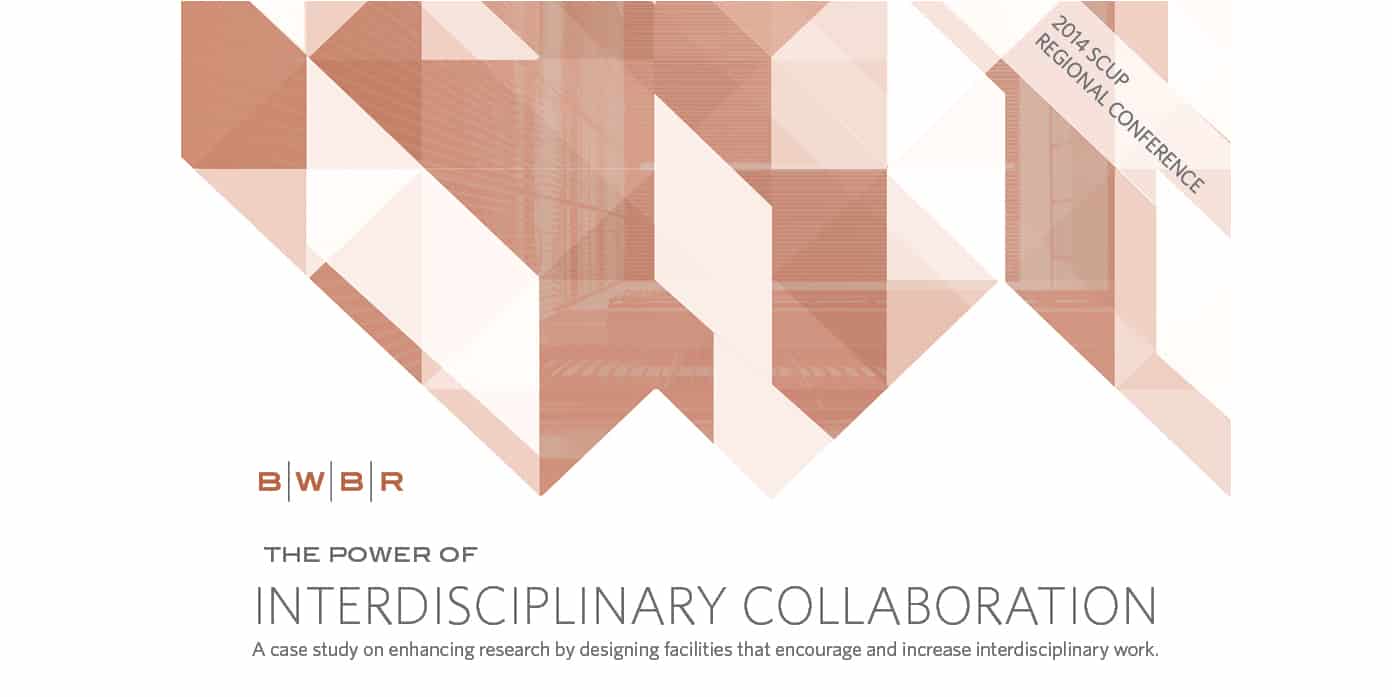SAINT PAUL – With today’s students and professors asking for more collaboration in the learning curriculum, colleges and universities are pressured to create spaces for such activities, even as upgrades to technology, research, and teaching spaces demand more financial resources.
Knowing how to use various evidence-based design strategies to meet the collaborative needs for students and professors will be the focus of a presentation BWBR’s Stephanie McDaniel, AIA, will give Nov. 6 at the Society of College and University Planners North Regional Conference in Toronto.
McDaniel, an architect and project manager at BWBR, will team with Miechaleen D. Diers, a building management services manager in the University of Minnesota Biomedical Discovery District, to present findings from a study of the university’s new Microbiology Research Facility that were used to design the last phase of the biomedical district. The study provided insight on the significance of collaboration in a research setting, including how researchers collaborate, what physical amenities impact or encourage collaboration, and how researchers anticipate their collaborative needs changing.
“It’s more than a demographic shift that is encouraging this change,” McDaniel said. “People no longer want to be simply an audience member in their learning and work. They want to be a participant, and just like the workplace where collaboration produces some of the most innovative outcomes, laboratories and education facilities have a role to play encouraging collaborative interactions.”
McDaniel and Diers’ presentation, “Enhancing Research through Interdisciplinary Collaboration Using an Evidence-Based Design Process,” will be part of the 2014 North Central Regional Conference Nov. 5-7 in Toronto. The SCUP conference brings together policy makers, higher education leaders, and organizations to examine and discuss ways to position colleges and universities for successful, sustainable futures in an era of increasing compliance, regulation, accountability, and shrinking funding levels.


